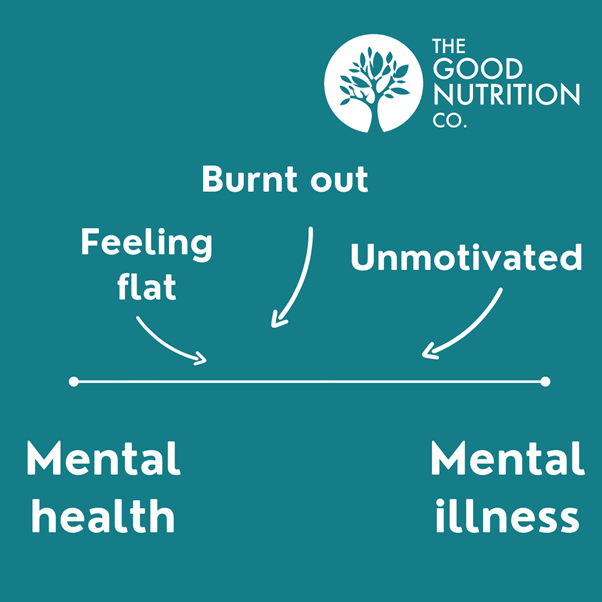
Mental Health in the Workplace
Aug 24, 2022A Three-Step Approach to Start Addressing It
When we discuss mental health, we tend to think of diagnosed clinical conditions like depression and anxiety, however such narrow definitions leave many Australians, who are suffering poor mood and affect,out of the equation. The World Health Organisation defines good mental health as “a state of well-being in which every individual realises his or her own potential, can cope with the normal stresses of life, can work productively and fruitfully, and is able to make a contribution to her or his community”. One way experts make the distinction between mental health and mental illness is as a continuum where complete mental health is one one side, with diagnosed mental illness on the other, with a whole range of feelings like low mood, poor motivation and poor energy sitting in the middle.

Mental health in the workplace in Australia - pre and post pandemic
It’s impossible to talk about mental health at the moment without addressing the elephant in the room - the pandemic. But, it’s worthwhile to first examine how mental health in the workplace was pre-pandemic. SuperFriend’s 2019 report found that more than half of Australian workers experienced a mental health condition in 2019, with 40% believing their workplace caused or worsened the condition. 20% of workers found their job very stressful, with workload and deadlines the key causes of stress. Fast track to 2020, and the same survey found that while some workers said workplace changes like remote working in 2021 made their job less stressful, 55% of workers stated that no action was being taken in their workplace to address mental health. While almost half of workers said they’ve achieved a better work-life balance in 2020, unfortunately this is not the case for casual workers as the gap continues to widen.
What you can do about it
Clearly, workplaces and work-related stress are a source of poor mental health in Australia - and this won’t change overnight. However, there are some steps you can take to address the problem in your own workplace.
1. Ask & listen
The first step is to understand the size and nature of the problem. Many workplaces send out regular employee wellbeing surveys, which can be great for receiving anonymous feedback - however these might feel quite corporate and impersonal to your staff. If possible, scheduling regular check-ins with your team can provide the opportunity to show that you are listening and provide them the chance to talk about issues that are complex and can’t be conveyed in multiple choice questions.
2. React
If you’re sending out a survey, make sure the results are transparent and communicated to the team - otherwise their input won’t feel valued. In one-on-one catch-ups, show active listening and responding with empathy and consideration. If a worker opens up to you, acknowledge and thank them for their vulnerability.
3. Act
Now is the opportunity to show your staff you’ve really listened - there’s no right or wrong way to do this as you need to respond in light of what your staff have told you. Ultimately, you need to make sure any initiative relates directly to the problem at hand. Some ideas are:
-
Introducing an EAP service
-
Provide managers with mental health training
-
Institute new communication channels that help staff feel connected, like Slack or Teams
-
Create a wellbeing program that allows staff to learn more about keeping themselves physically and mentally healthy
Get in touch to find out how The Good Nutrition Co can create tailored nutrition solutions to respond to your team’s physical and mental wellbeing needs.
Email: [email protected] for more information.

